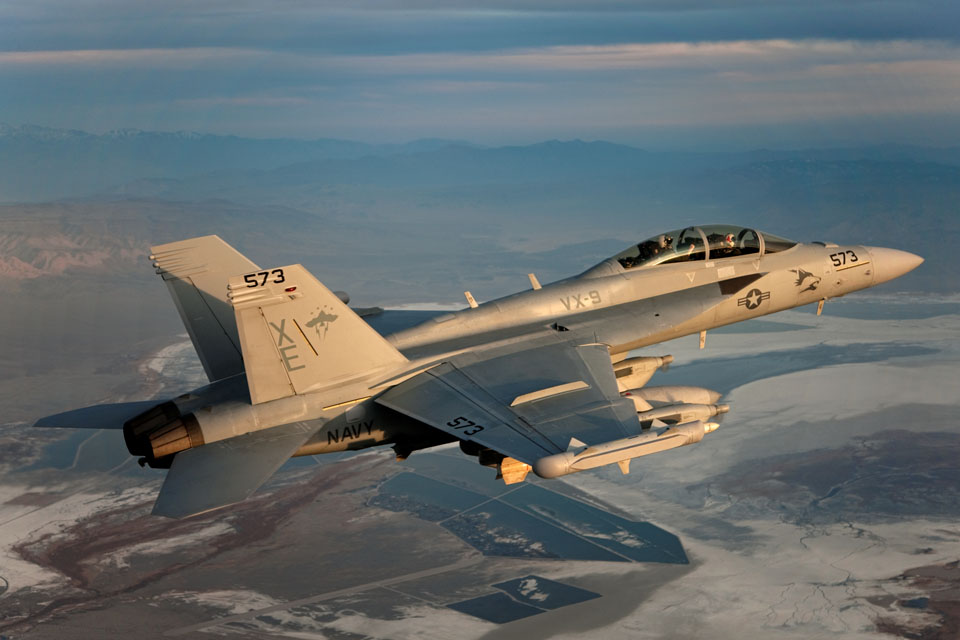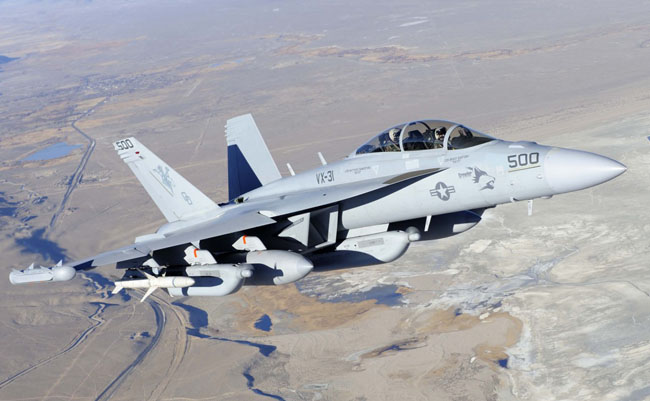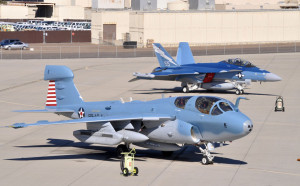

Australian Defense Minister Stephen Smith, accompanied by Minister of Defense for Materiel Jason Clare, made a joint statement on 23 August announcing that the Royal Australian Air Force (RAAF) would be modifying twelve of the service’s Boeing F/A-18F Block II Super Hornets into EA-18G Growler Electronic Warfare Attack aircraft.
The RAAF currently operates a fleet of twenty-four Super Hornets half of which are prewired for modification to the Growler configuration. The cost of the deal is estimated to be $1.57 billion. This agreement will include conversion kits, spare parts, training, and support equipment. The purchase is being managed through the United States’ Foreign Military Sales (FMS) program.
With this acquisition, Australia will become only the second nation in the world to operate the Growler. The only other force in the world to have the Growler is the United States Navy. The modified aircraft are scheduled to be available for operational use beginning in 2018.
The Growler is a specialized version of the Super Hornet capable of electronic jamming effective against opposing aircraft, land-based radar, and a wide-array of communication’s networks. It has also proven effective in an intelligence, surveillance, and reconnaissance (ISR) role.
This agreement represents an unusual move for the United States as it is extremely rare for the US to share technology military leaders consider to be sensitive and critical to the maintenance of America’s warfighting superiority. Such a move is an indication of the value the United States places on its relationship with Australia and the strategic importance of Australia’s role in the Pentagon’s renewed focus on the Pacific.
Modern airborne warfighting tactics recognize the growing importance of electronic threats and the need for effective countermeasures. The Growler configuration gives the RAAF the ability to field an aircraft capable of delivering the level of electronic-threat suppression the modern battlefield requires.
The Growler also gives the RAAF a platform for the conduct of ISR operations, a capability that has been somewhat less effective in the past.
Concerns regarding the availability of the Growler’s ALQ-99 mid-band jammer pods, no longer in production, were laid to rest with an announcement that the United States Navy would draw the necessary equipment from its own inventory to ensure that Australia’s needs are met. The low-band ALQ-99 transmitters are currently still in production and availability is not an issue.
The US Naval Air Systems Command (NAVAIR) released a statement saying that they would be working with Cobham of Lansdale, Pennsylvania “to deliver the low-band transmitters to the RAAF” and will ensure the “remainder of the transmitters and ancillary equipment–radomes, hardbacks, ram air turbines and universal exciters–will be provided as refurbished out of USN/USMC (US Navy and US Marine Corps] excess inventory.”

Work is continuing on development of the Next Generation Jammer that the US Navy expects to have in operational use within a few years. NAVAIR’s statement also said that with the “Next Generation Jammer IOC [initial operational capability] scheduled for 2018, we expect that the RAAF, USN and USMC will be using the ALQ-99 pods for one to two years until the USMC retires its ICAP [Improved Capability] III EA-6Bs in 2019.” At that time, the RAAF and the US Navy will be the only operational users of the ALQ-99 suite until the system is retired in favor of the Next Generation Jammer.
Australia is also in line to purchase as many as 100 Lockheed Martin F-35A Lightning II Joint Strike Fighters (JSF). Tom Burbage, the head of Lockheed Martin’s F-35 Program Integration Team, told reporters that the EA-18G Growler upgrade was not a threat to the total number of F-35As Australia would be purchasing because the Growler and the JSF are two different aircraft with quite dissimilar missions and overall capabilities.
The move to acquire the Growler modifications gives the RAAF a much needed airborne electronic warfare aircraft now. Should the US Navy’s Next Generation Jammer prove to be successful, Australia would likely be considered a prime candidate to upgrade its ALQ-99 systems to the new jammer. If the new jammer is not a suitable fit for the RAAFs Growlers when it becomes available, Australia might be able to acquire additional ALQ-99 pods at a hefty discount.
Deciding to go ahead with the Growler modifications indicates that Australia intends to keep some of its Super Hornets flying alongside the F-35As when they are deployed. Australian officials have scheduled an F-35A progress assessment for later this year to review the number of F-35As that will likely be purchased.

















